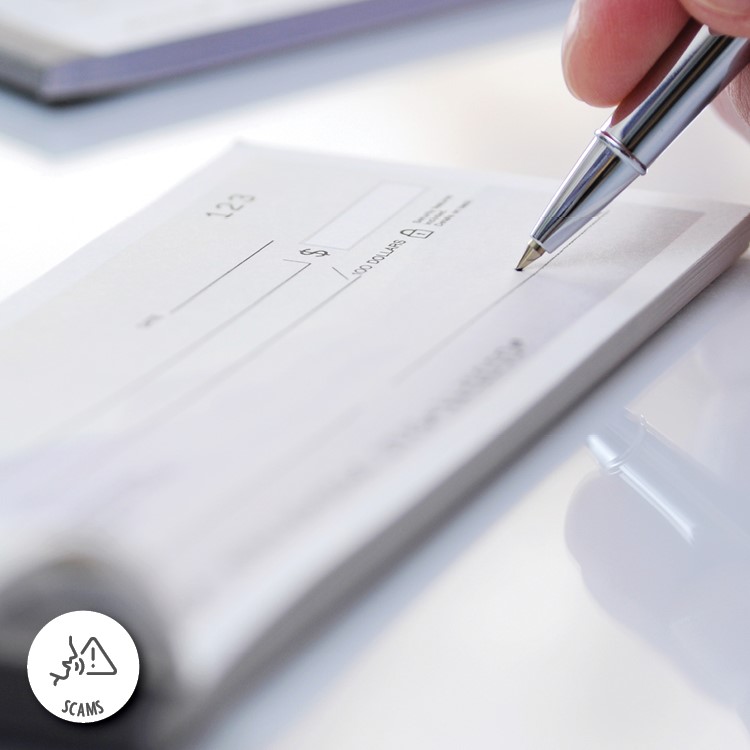
When Midge Laurin of Chicago, Illinois, mailed out a $30 check, she had no idea it would be intercepted by a scammer and altered to be made out to someone else to the tune of $9,475. Check-washing scams like this are on the rise and can leave victims struggling to reclaim their lost funds for months. Protect yourself from check washing:
How the scams play out
In a check-washing scam like what’s described above, a target places a check in the mail. It gets stolen by scammers, who use acetone or bleach to erase the ink on the check. Finally, they’ll rewrite the numbers and/or the payee before depositing the checks into their own accounts.
Sometimes, the scammer will take the ruse further by using the checking account details found on the check to commit further crimes against the check-writer. This may include producing counterfeit checks in the victim’s name and fake IDs, driver’s licenses, and passports. Victims may only learn about these crimes when they get overdraft notices or are informed their ID is no longer valid.
Protect yourself
Unfortunately, check washing may not be discovered for weeks or even months after its occurrence. Sometimes, the victim will only learn of the ruse when they review their monthly checking account statement and see that the check amount and/or payee has been altered. Or they may only find out about it when the intended recipient informs the check-writer they still have not received the check. The scam’s discovery is more likely to be delayed when the scammers have not modified any information on the check and have simply stolen and deposited a check made out to “cash.”
To protect yourself, SACFCU recommends you use the convenience of online banking to monitor your account activity daily. You can access It’s Me247 from our Web site home page and the SACFCU mobile app. Contact a member services representative to set up your initial access to online banking. And, if you ever do notice an error on your account, report it to SACFCU immediately. In most cases, consumers have up to 60 days from the statement cycle to report fraud. San Antonio Citizens Federal Credit Union, and
Law enforcement agencies on local and federal levels, including the U.S. Postal Inspection Service and the FBI, have task forces to help stop check washing. They offer the following strategies for keeping your checks and your information safe from scams:
- Whenever possible, use mobile and online banking services and P2P systems as a replacement for checks.
- When writing checks, use black ink, preferably the gel kind. The ink found in blue ballpoint pens can be easily removed with acetone.
- Don’t place mail containing checks in curbside mailboxes or receptacles. Hand this mail directly to your carrier or mail it from inside the post office.
- Retrieve your mail daily and never leave the mailbox full overnight. If you’ll be traveling, you can arrange for the post office to hold your mail for up to 30 days. Alternatively, have a friend or trusted neighbor retrieve your mail so it doesn’t pile up.
- When mailing checks, use envelopes that have security tinting.
- Shred or burn all canceled checks, checks deposited through your mobile app, credit card statements, and bills.
- Review your checking account activity frequently. Ensure all checks have cleared for the correct amounts and to the correct payees. You can generally access this information through your financial institution’s mobile banking app or website.
- Store your checks in a secure place within your home.
- Avoid making checks out to “cash”. Instead, write out your checks to a specific person or business.
Check washing can wreak havoc on a victim’s finances before they even know it’s occurred. Follow the tips outlined here to keep your checks safe.
